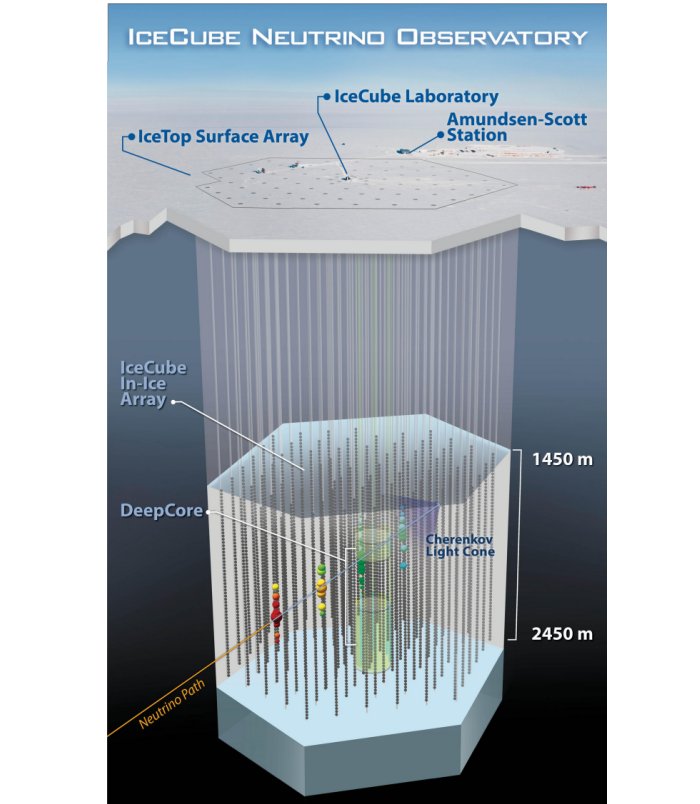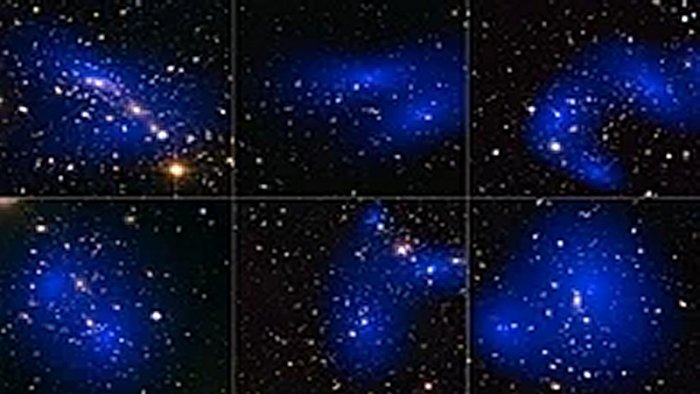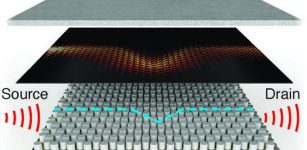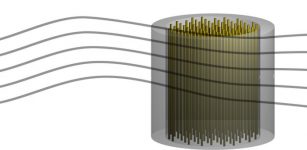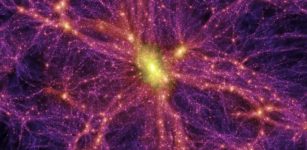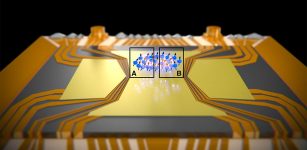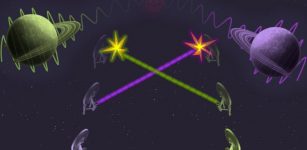Analysis Puts Most General Constraints On Nonstandard Neutrino Interactions
Eddie Gonzales Jr. – MessageToEagle.com – For decades, physicists have theorized that the current best theory describing particle physics—the “Standard Model”—was not sufficient to explain the way the universe works. In the search for physics beyond the Standard Model (BSM), elusive particles called neutrinos might point the way.
Neutrinos are sometimes called “ghost particles” because they so rarely interact with matter that they can travel through just about anything. However, while traveling through matter, they may be “slowed down”, depending on the neutrino’s type (or “flavor”), in what is known as a “matter effect”.
©: IceCube Collaboration Schematic representation of the Deep Core
In many BSM models, neutrinos have extra interactions with matter due to new and thus far unknown forces of nature. Different neutrino flavors might be affected to varying extents by these interactions, and the strength of the resulting matter effects depends on the density of matter the neutrinos are passing through. If researchers observe matter effects that can be explained as “nonstandard interactions” (NSI), it might point to new physics.
The IceCube Neutrino Observatory, an array of sensors embedded in the South Pole ice, was built to detect and study neutrinos from outer space. But in IceCube’s center is a subset of more densely packed sensors called DeepCore; this region is sensitive to lower energy neutrinos formed in Earth’s atmosphere that are potentially more strongly affected by nonstandard matter effects. In a paper published today in Physical Review D, the IceCube Collaboration discusses an analysis in which they examined three years of DeepCore data to see whether atmospheric neutrinos have extra interactions with matter. This analysis puts limits on all the parameters used to describe NSI, an improvement upon earlier analyses that were restricted to only the NSI regimes to which IceCube is most sensitive.
Valuable ambassadors for new physics
“Atmospheric neutrinos are a great probe for testing whether neutrinos have NSI because they pass right through Earth, including its center, which has a very high matter density,” says Elisa Lohfink, graduate student at the University of Mainz in Germany and a lead on this publication. Changes in matter density directly change the neutrinos’ oscillation patterns—the way neutrinos change their flavors, or “oscillate”—and therefore which flavors of neutrinos arrive at the South Pole detector. IceCube DeepCore is sensitive to these matter effects because of the huge number of atmospheric neutrinos it detects every year.
In this analysis, led by University of Mainz graduate student Thomas Ehrhardt, the researchers looked at the oscillation patterns of neutrinos that had arrived at DeepCore from all directions and determined whether they matched the Standard Model expectations or showed effects from any of five effective parameters that measure how much more a neutrino flavor interacts than it would in the Standard Model. The researchers could then constrain the effective NSI parameters by testing how well the oscillation pattern matches different NSI scenarios.
First, Ehrhardt and his collaborators examined one effective parameter at a time, yielding the results shown in the figure above. Fully free NSI were investigated separately. Since the analysis was largely independent from any specific underlying models, the researchers were able to constrain NSI without relying on one model to be correct.
The researchers were able to put limits on each of the five possible NSI parameters individually at a sensitivity that is at least comparable to the world’s combined limits, an accomplishment described by Lohfink as “unprecedented”. More importantly, the researchers say, is the finding that IceCube can probe models in which they fit all the parameters at once. “To our understanding, there is no other experiment in the world that can do this from a single measurement,” says Sebastian Böser, professor at the University of Mainz. “We can put limits on an unprecedented range of models for new physics in the neutrino sector.” The result is a major improvement on a previous IceCube analysis that looked at just one parameter.
The researchers hope that the rest of the neutrino community will pick up on the results and incorporate them into the global fits. And Lohfink and her collaborators are already working on a follow-up analysis using a much larger data sample—eight years of data instead of three years—with much better sensitivity. They hope to have an improved limit soon.
“In the long run, the IceCube Upgrade will be a real game-changer for this type of analysis,” says Böser. “Not only will the Upgrade provide better calibration and reduce the impact of systematic uncertainties, but it will also allow us to resolve the neutrino oscillations much, much better, and therefore let us see potential deviations from the Standard Model much more clearly. I am truly excited about this!”
Written by Eddie Gonzales Jr. MessageToEagle.com Staff

